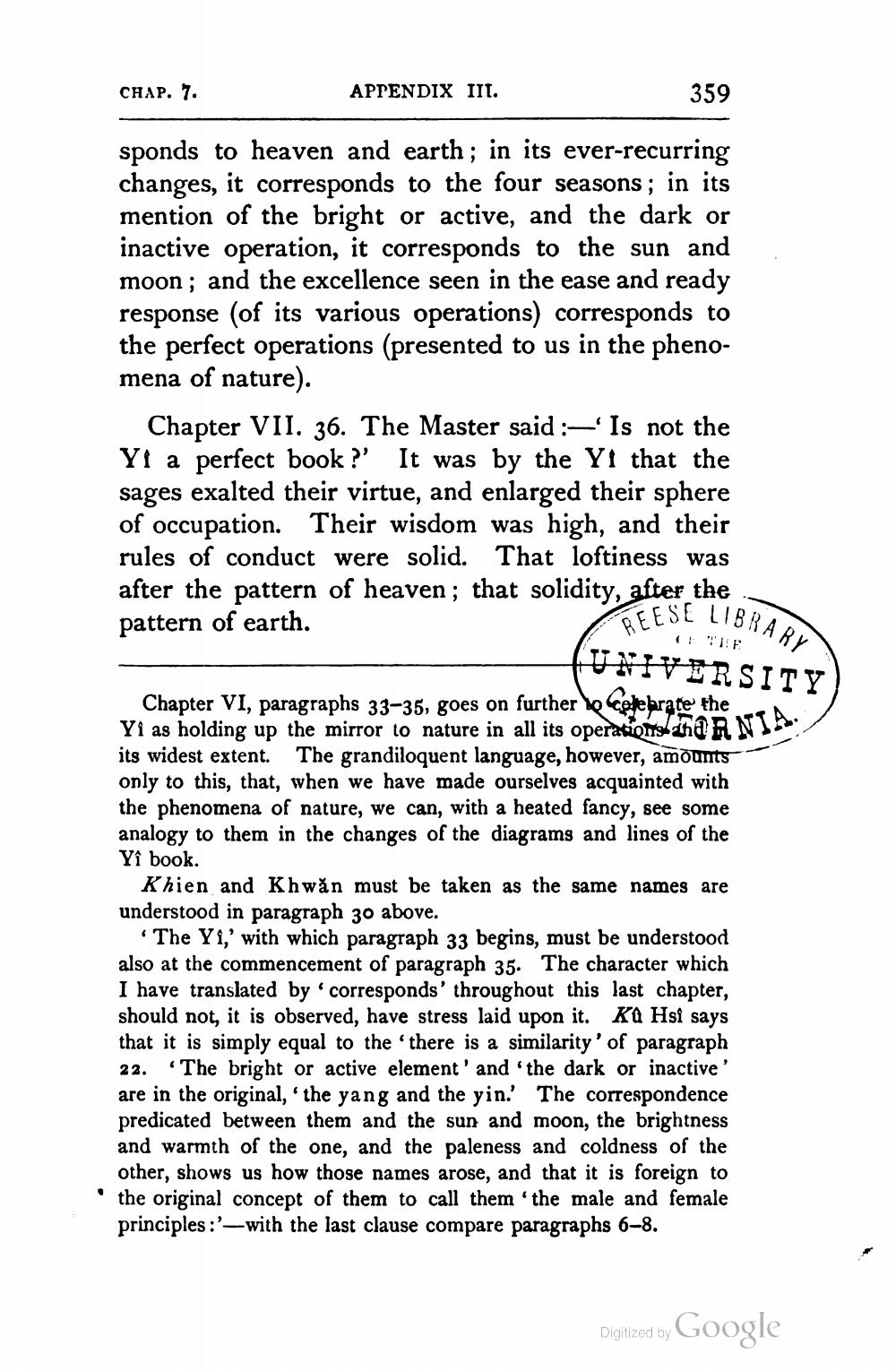________________
CHAP. 7.
APPENDIX III.
359
sponds to heaven and earth; in its ever-recurring changes, it corresponds to the four seasons; in its mention of the bright or active, and the dark or inactive operation, it corresponds to the sun and moon; and the excellence seen in the ease and ready response (of its various operations) corresponds to the perfect operations (presented to us in the phenomena of nature).
Chapter VII. 36. The Master said : Is not the Yi a perfect book ?' It was by the Y1 that the sages exalted their virtue, and enlarged their sphere of occupation. Their wisdom was high, and their rules of conduct were solid. That loftiness was after the pattern of heaven; that solidity, after the pattern of earth.
GREESE LIBRA
IBRARY
UNIVERSITY
Chapter VI, paragraphs 33-35, goes on further e Colebrate the Yi as holding up the mirror to nature in all its operations and RNED its widest extent. The grandiloquent language, however, amounts only to this, that, when we have made ourselves acquainted with the phenomena of nature, we can, with a heated fancy, see some analogy to them in the changes of the diagrams and lines of the Yi book.
Khien and Khwăn must be taken as the same names are understood in paragraph 30 above.
The Yi,' with which paragraph 33 begins, must be understood also at the commencement of paragraph 35. The character which I have translated by corresponds' throughout this last chapter, should not, it is observed, have stress laid upon it. KQ Hsi says that it is simply equal to the there is a similarity' of paragraph 22. The bright or active element' and 'the dark or inactive' are in the original, the yang and the yin. The correspondence predicated between them and the sun and moon, the brightness and warmth of the one, and the paleness and coldness of the other, shows us how those names arose, and that it is foreign to the original concept of them to call them the male and female principles :'-with the last clause compare paragraphs 6–8.
Digitized by Google




